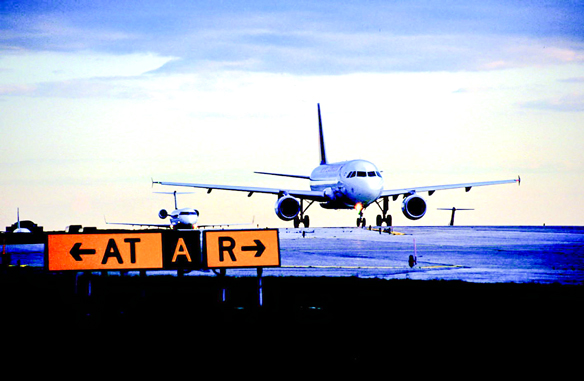IATA Takes Aim At Shortcomings Of North American Air Traffic Control

IATA has taken aim at the performance of the United States and Canadian air traffic control (ATC) organizations.
In a statement, its Director General, Willie Walsh said that: “Over the past 12-18 months airlines have responded to the very strong post-pandemic travel demand by adding tens of thousands of employees to their workforces. US passenger airline employment is now at its highest level in over two decades, for example. In contrast, ATC staff shortages in North America continue to produce unacceptable delays and disruptions for the traveling public on both sides of the border.”
Walsh pointed out that: “The recent report by the US Department of Transportation (DOT) Office of the Inspector General makes clear that the Federal Aviation Administration (FAA) has allowed the controller workforce to shrink to the point where it is challenged to maintain continuity of operations at the country’s most critical air traffic control facilities. In fact, 77% of these vital facilities are staffed below the Agency’s 85% threshold. The situations in New York Terminal Radar Approach Control and Miami Tower are extreme at 54% and 66%, respectively.”
He continued: “Earlier this year, airlines reduced their schedules by up to 10% at New York area airports at the request of the FAA which had acknowledged that it could not accommodate the current level of operations there with the existing controller workforce.”

Walsh also noted that: “Poor ATC performance comes on top of the FAA and DOT requiring airlines to invest over $630 million to upgrade or replace fully certified onboard avionics equipment on thousands of aircraft to mitigate the risks of 5G rollout near airports. This is unique to the US. The 5G rollout in other parts of the world has not required anything like this of airlines.”
And IATA’s Director General added that: “This double whammy of poor planning is exceptionally disappointing. While the administration has well developed plans for new passenger rights regulations to penalize airlines for delays even if the root causes are beyond the industry’s control, a fix for controller shortages that would actually reduce delays is far too long in coming. As a first step, it is long past time for the appointment of a permanent FAA Administrator equipped to show strong leadership in devising a plan to rapidly rebuild the controller workforce.”
As for Canada, Walsh observed that: “Recent press reports highlight how NAV Canada, the Canadian air navigation services provider (ANSP), is also letting down airlines and the traveling public, with hundreds of flights canceled owing to controller shortages.”
He said that: “This comes as the Canadian Government is revising passenger rights legislation, solely placing the burden of care and compensation on airlines, irrespective of the root cause of disruptions and delays.”
Said Walsh: “We agree with the Government that shared accountability is needed across the entire value chain, something that cannot be achieved by singling out airlines. Instead of focusing on bureaucratic and punitive legislation, the Government needs to urgently address the shortfalls in those sections of the aviation ecosystem which it controls. Asking airlines to negotiate performance agreements with monopoly service providers reflects a lack of understanding of the industry and will not improve the overall travel experience.”
The bottom line for IATA’s Director General is that: “Ottawa and Washington, DC need to take ownership of the issues under their direct control and lead in resolving them. Appointing a permanent FAA Administrator would be a first and major step in urgently addressing the US aviation/air traffic control infrastructure constraints, which are hindering airlines from delivering the service travelers expect. Furthermore, refraining from doubling down on costly and poorly thought-out air travel consumer rights regulations in both countries, would free up resources across the entire value chain, in order to enhance the customer experience.”
Go to www.iata.org for more.


